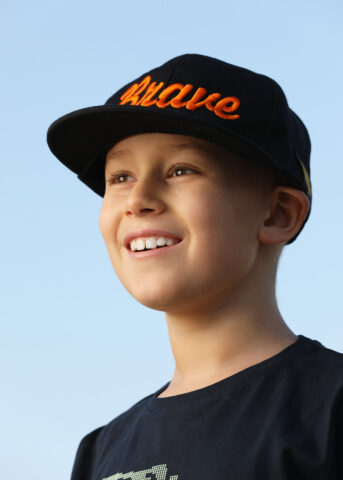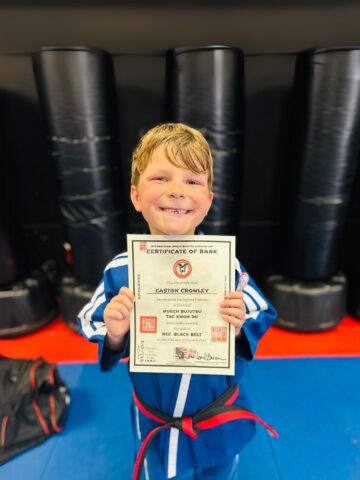Every morning when she awakes, Sydney Amato begins her daily battle with her body.
If she’s lucky, the 16-year-old will have gotten a handful of hours of uninterrupted sleep – dreaming, perhaps, of doing what most healthy kids her age take for granted:
Hanging out with friends. Going to school. Learning to drive.
Because of a neurological condition called dystonia, Sydney, who is in excellent cognitive health but speaks and walks with some difficulty, suffers from involuntary and near-constant contraction of muscles in her neck, arms, legs and trunk.
Her mind is unable to control the painful jerking that makes most of her body twist and go rigid, her muscles moving out of normal sequence.
Born a right-hander, she can feed herself with some struggle using her left hand. She wants to dress and put on makeup herself, but those normally simple tasks become lengthy ordeals.
“My body fights me all the time,” says Sydney, trying to distract herself in her hospital bed one morning by watching an old episode of “Keeping Up with the Kardashians.” Listening to her favorite music – Ariana Grande, Lauren Daigle, Drake – can only temporarily transport Sydney away from her debilitating condition.
“She knows what she wants to do,” says her father, Louis. “But her body won’t let her.”
Specialists at CHOC are working hard to change that.
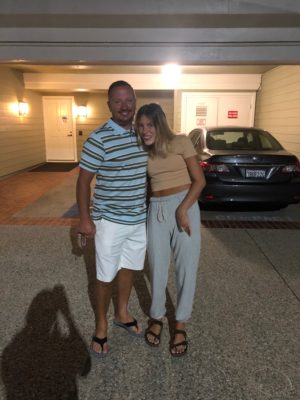
A first for CHOC
Recently, a team led by Dr. Terence Sanger, a physician, engineer and computational neuroscientist who joined CHOC in January 2020 as its vice president of research and first chief scientific officer, and Dr. Joffre E. Olaya, CHOC’s functional restorative neurosurgeon, implanted several temporary electrodes into Sydney’s brain. Collaborating with CHOC physicians was CHLA neurosurgeon Dr. Mark Liker.
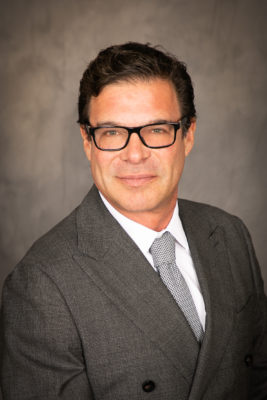
The surgery marked the first time a patient with a movement disorder at CHOC underwent a procedure called deep brain stimulation (DBS).
Working in perfect harmony as a team, Dr. Sanger and Dr. Olaya oversaw the first portion of a three-stage surgery on Sydney. As the surgeon, Dr. Olaya placed the leads following advice from Dr. Sanger, the neurologist, on where they should go.
In the procedure, millimeter-thick electrodes were precisely positioned into the basal ganglia region of Sydney’s brain – about 3 inches deep. The surgery involved the use of the ROSA robot, the same tool that has been used during brain surgery on epilepsy patients at CHOC since 2015.
Considered one of the most advanced robotized surgical assistants, ROSA — which stands for robotic operating surgical assistant — includes a computer system and a robotic arm. It’s a minimally invasive surgical tool that improves accuracy and significantly reduces both surgery and anesthesia time.
The ROSA robot helped with implanting and targeting the electrodes and a portable operating-room CT scanner confirmed their position.
Turning down the volume
DBS is designed to ease Sydney’s condition by sending electrical currents to jam her malfunctioning brain signals.
Think of turning down the volume on your car radio.
“Nobody really understands the cause of dystonia,” Dr. Sanger explains, “but there’s probably too much electrical stimulation going on in the motor areas of the brain. We’re trying to calm down that extra noise.”
Although DBS dates to the 1960s, it wasn’t until the 1980s that the modern era of using it to treat adult patients with tremor and Parkinson’s disease began.
In 2000, Dr. Sanger, working with engineers, data scientists, neurosurgeons and others, began implanting electrodes in pediatric patients.
Instead of the established method of placing the leads at predetermined sites and hoping they worked, Sanger and his team, just as they did in Sydney’s case, placed temporary leads to best assess where they should go permanently based on patient response.
In 2016, Dr. Sanger began honing DBS to treat children with dystonia. Before the surgery on Sydney, Dr. Sanger had overseen DBS on 26 children using the same three-stage technique. He says 80% of those children have seen successful results.
Early signs
Sydney began showing symptoms of dystonia – tremors in her hands – when she was 5 ½ years old.
A year later, she was using a wheelchair. She had her first brain surgery at age 7.
Since then, “she’s been all over the U.S.” seeking the right treatment for her condition after several setbacks, her father says.
But her condition was not improving.
Early this year, a neurologist in Kansas City, Missouri, recommended that Sydney see Dr. Sanger.
“I asked him, ‘If Sydney was your kid, where would you go?’” Louis Amato recalls. “He said, ‘Hands down, Dr. Sanger.’”
The COVID-19 pandemic pushed Sydney’s surgery to mid-August.
Sydney already had two electrodes in her brain that were only partially working when she came to CHOC in early August for surgery.
After two extensive run-throughs with their team, Dr. Sanger and Dr. Olaya, in a six-hour procedure that at one point required nearly 20 people in the operating room, implanted more electrodes to give Sydney a total of nine.

After surgery, optimism
On Thursday, Aug. 20, six days after Sydney’s surgery, Dr. Sanger stopped by her room at CHOC Hospital. The room was decorated in purple, Sydney’s favorite color.
Dr. Sanger greeted her as CHOC staff members, joined by members of Sanger Lab, Dr. Sanger’s research laboratory that conducts research in pediatric movement disorders, prepared to have Sydney walk back and forth down a hallway while connected to electrical equipment programmed to record signals in her brain and muscles.
A thick coil of multicolored wires snaked from under a large white bandage covering Sydney’s head. Extending about 6 feet, the wires were plugged into specialized recording equipment controlled by Jennifer MacLean, a CHOC pediatric nurse practitioner whose job was to manipulate the strength of electrical charges affecting the four points of contact on each electrode.
The goal: determine which charges worked best and on which electrodes.
“It could have turned out that the DBS procedure made no difference,” Dr. Sanger says. “But we’ve seen a very good response in Sydney.”
For example, her once mostly useless right hand was working much better.
“It gives you goosebumps,” Louis Amato says.
After taking a bite of a veggie burger and sipping some water, Sydney started to walk.
Following her were seven CHOC and Sanger Lab specialists.
“Go nice and slowly,” Jennifer told Sydney. “You’re going too fast for us!”
Perhaps Sydney was anxious to get back to riding Tigger, a quarter horse, in her hometown of Carthage, Missouri. She has been riding him for six months.
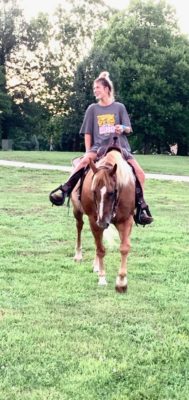
“Her balance isn’t bad on the horse,” says Louis Amato.
Sydney also loves to tan by her pool and swim.
What she wants most, however, is to be freed from her body so she can return to school and do what most teens enjoy.
“It’s stressful,” says her mother, Angie. “She has a lot of friends her age, but she can’t do a lot of the things they do. She has her days when she can get really upset.”
Now, however, working with Dr. Sanger, Dr. Olaya and the entire team at CHOC, the Amatos are more optimistic than ever.
“We’re hopeful that this is going to be a big life-changer for her,” Angie Amato says. “That would be the best thing that could ever happen – better than winning the lottery.”
‘The A-Team’
After crunching numbers for a week to assess which of the nine electrodes proved to be the most effective based on how Sydney responded to varying degrees of electrical currents, Dr. Sanger and his team settled on four electrodes that were permanently used to treat her condition – three new ones, and one existing one.
The team performed this second surgery on Sydney in late August.
In the third and final surgery, successfully completed in early September, a rechargeable generator that powers the DBS leads was implanted in Sydney’s chest.
“As we get better and better at this and as the technology progresses, we’ll be able to do this on kids who are less sick than Sydney,” Dr. Sanger says.
Dr. Sanger and Dr. Olaya are poised to dramatically improve the lives of many more patients like Sydney at CHOC.
“I’m really excited that we will be doing more of these procedures to help pediatric patients with movement disorders and significantly improve their quality of life,” says Dr. Olaya. “I look forward to continuing to provide this type of personalized care.”
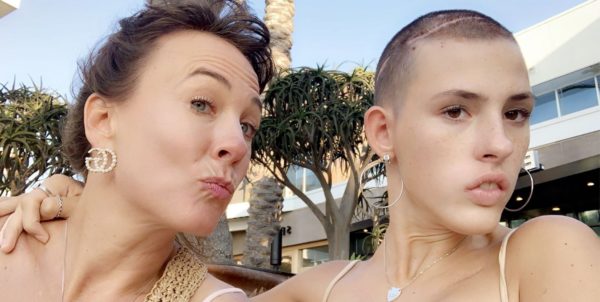
Angie and Louis Amato say Sydney has never gotten this much special attention during her 11-year-plus medical journey.
“Here at CHOC,” Louis Amato says, “we feel like we’re with the A-Team.”
Says Sydney: “I’ve never felt this much confidence and this good about treatment before.”
Get more expert health advice delivered to your inbox monthly by subscribing to the KidsHealth newsletter here.
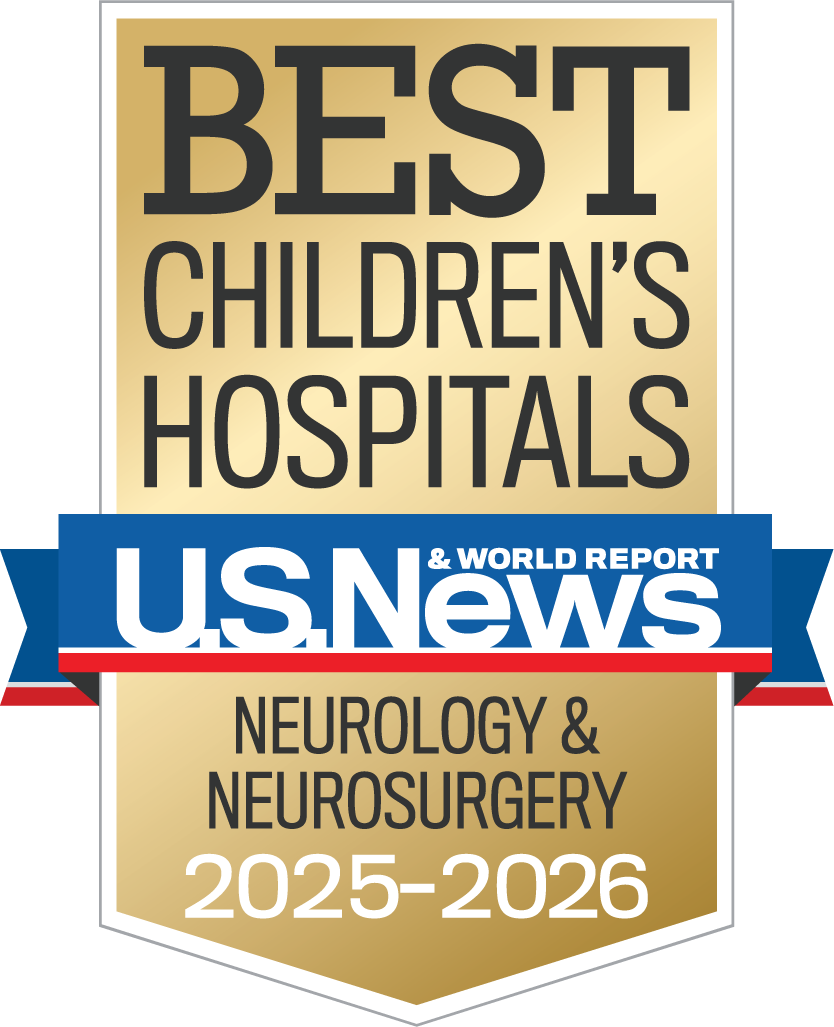
Learn more about CHOC’s Neuroscience Institute
CHOC Hospital was named one of the nation’s best children’s hospitals by U.S. News & World Report in its 2025-26 Best Children’s Hospitals rankings and ranked in the neurology and neuroscience specialties.

